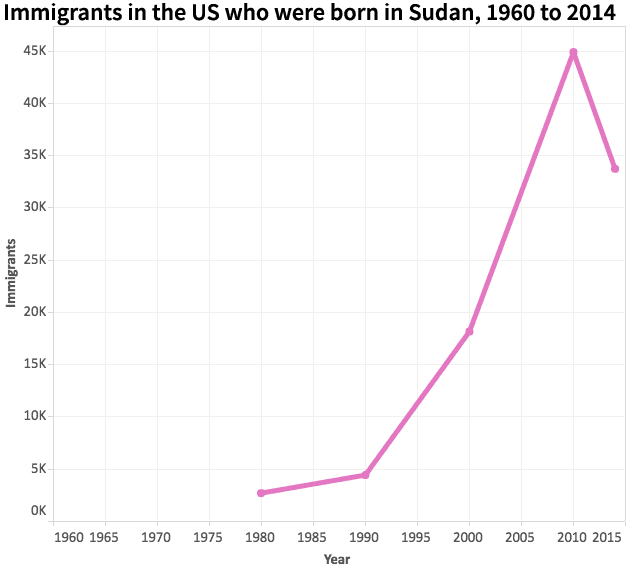A field trip in California takes kids and parents all the way back to Sudan — on a bus
Sudanese mothers on a bus warm up their voices for songs and zaghrouta, the ultimate Sudanese joyful noise. They're on a field trip in Northern California with their US-born children. The hope is that even the children who try to drown out the music with their headphones might absorb something.
Twenty kids and 15 adults pack a yellow school bus. The Sudanese moms and dads chat away in Arabic, while their kids at the back of the bus horse around in English. There's tons of food: containers of fava bean dip, eggplant salad and pita bread.
As everyone settles in, two women pick up drums, another pulls out a tambourine. The moms warm up because they will lead the sing-a-longs and mix in a bit of zaghrouta, the ultimate Sudanese joyful noise.
Their kids were born in the US, and many vacation in Sudan every other year for one month or two. But it's not enough to attach their families to their Sudanese roots, so they take field trips to try to replicate life back home. The hope is that even the kids who try to drown out the music with their headphones might absorb something.
As we roll along, the moms belt out tunes from their youth in Sudan, songs about men and love. One song is part of a Sudanese wedding ritual called the sayra (also referred to as sera, seira or seera). It's when the groom and his family take a bus to the bride’s house on their wedding day. It used to be that the trip was made on foot. Then, as motor vehicles became common, the groom's family would pack a bus like this one to make the trip, singing and drumming until they reach the bride’s house.
Sudan Party Bus from KALW News on Vimeo.
Or in this case, until they cross the Bay Bridge and pull into the parking lot of the California Academy of Sciences in San Francisco.
Parent Manahil Elsheikh brought her three kids on the trip and was excited to see them immersed in a part of her culture that she says they’ve never experienced before. The parents also snuck in a lesson in Sudanese music history, a song called "Alleemoon Sigaytu Alay" — "It’s my job now to water the lemon trees because the men have gone to war." It's is a classic from the 1940s by one of Sudan’s first woman singers, Aisha el Fellatiya, who sang in support of Sudanese soldiers during World War II.

Many immigrants from Sudan to the US arrived in the 80s and 90s, often fleeing conflict and unrest at home. And through 2010, immigrants from Sudan were among the fastest growing groups who came the US from the Middle East and North Africa, according to the Migration Policy Institute. Now that this community has children, keeping culture alive is important. Asma Khalifa, a principal of the Sunday school run by Sudanese Association of Northern California, which is also hosting this outing, says days like these build important social skills.
"If they go back to Sudan, they will fit in the community,” she says.
Jihad Abul Yasar, who teaches at the Sunday school, thinks about the future.
"Later, when it’s time for them to get married, these kids will remember this day and this trip and ask for their own sayra,” she explains.
But does it register with the kids? Sara Basheer, 9, is engaged, clapping along with the parents. She says this field trip gives her a sense of belonging, more so than regular school.
“You get to see more of your culture people,” she says.
But not everybody is as enthusiastic. Some of the kids are at the back of the bus chatting and some are gazing out the windows.
Sixth-grader Shahd Hamid doesn't not connect with the purpose of the bus ride and is not taken by the sayra wedding ritual. "They open the windows trying to make people look at them," she says. "They’re proud, but they’re showing off! ‘Our son is so-and-so and he's getting married! Look at our son he’s getting married!"
Still, Hamid says she enjoyed the outing, though she cringed a bit as people stared at the bus and the commotion.
“Everyone in the street is watching and they’re like what’re they doing? People can’t understand us because of the language and everything.”
After spending some time at a San Francisco science museum and a group lunch outside, the the group boards the bus once more, but in pouring rain. The moms, now tired, start singing, but then a sound from the back of the bus. Were the kids joining in? They are, but it's the theme songs to the cartoon Little Einsteins. Not quite Sudanese, but to the parents, any engagement is a plus.
I ask Elsheikh if she thought that, in the end, the kids got the point of this trip.
“Yes, I think they get it,” she says. "And if they didn’t get it right now, one day they’re going to remember that my parents, teachers — they brought all this culture to us. When they grow up, they’re going to appreciate it one day.”
Just to be sure, she throws handfuls of candy toward the kids as their singing continues. The kids catch the treats in the air and Elsheikh smiles. Even this chaotic moment reenacted a jirtig, when the groom throws candy at wedding guests. The elders believe that the candy takes the devil away from the couple and the weddings guests. “It’s fun for the kids,” says Elsheikh.
And at this moment, the two generations connect, even if they aren't traveling thousands of miles to practice their heritage. They’re doing it right here, on a school bus crossing the San Francisco Bay.